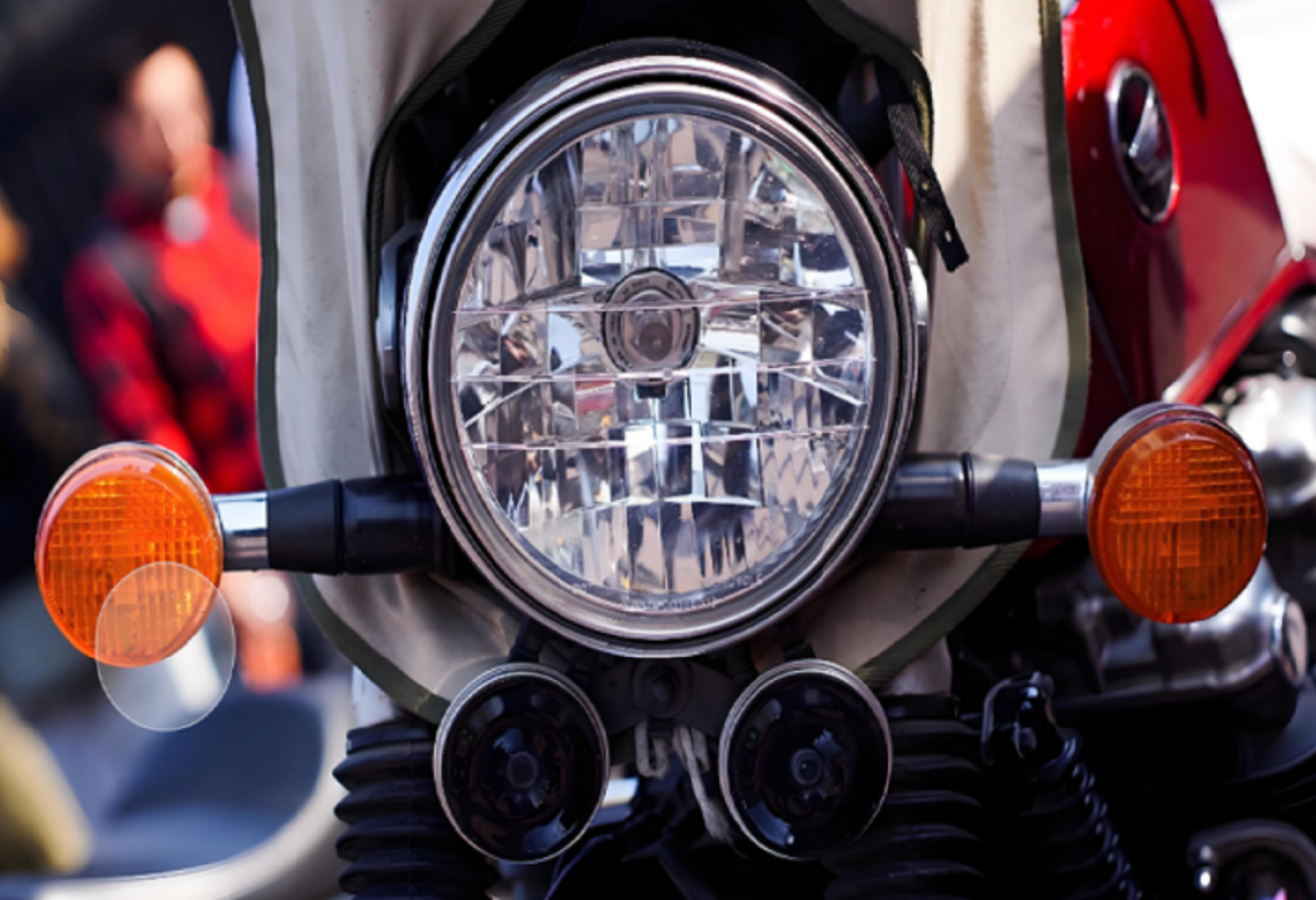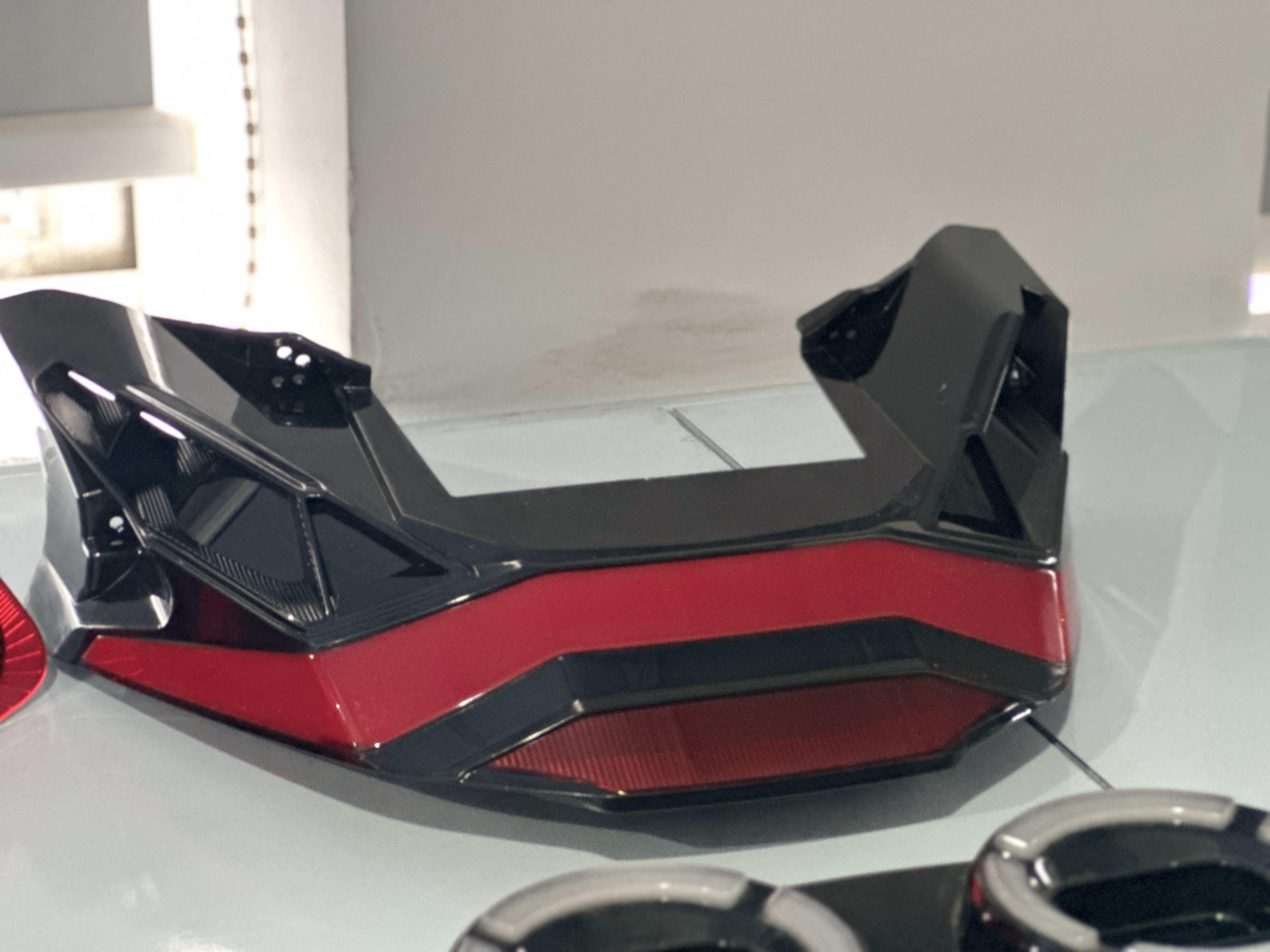Views: 0 Author: Site Editor Publish Time: 2025-01-17 Origin: Site











Headlamp moulding for Honda motorcycles is a critical aspect of motorcycle manufacturing, ensuring that the headlamps are not only functional but also meet the aesthetic and safety standards expected by riders. This process involves the design and production of moulds that shape the headlamp components, including the lens, reflector, and housing. The headlamp is a vital safety feature, providing illumination for the rider and making the motorcycle visible to other road users. Therefore, the quality of the moulding process directly impacts the performance and durability of the headlamp. In this discussion, we will delve into the various challenges faced in headlamp moulding for Honda motorcycles and explore the solutions that have been implemented to overcome these challenges.
Headlamp moulding for Honda motorcycles involves several challenges that can affect the quality and performance of the final product. One of the primary challenges is achieving the correct optical performance. The headlamp must provide adequate illumination for the rider while minimizing glare for oncoming traffic. This requires precise control over the moulding process to ensure that the lens and reflector are shaped accurately.
Another challenge is material selection. The components of a motorcycle headlamp are typically made from plastics such as polycarbonate or acrylic, which need to withstand high temperatures and resist yellowing over time. The chosen material must also be compatible with the moulding process and the intended use of the headlamp.
Additionally, the moulding process itself can present challenges. Injection moulding, for example, requires careful control of temperature and pressure to ensure that the plastic flows correctly into the mould and takes the desired shape. Any inconsistencies in the moulding process can lead to defects in the headlamp components, such as bubbles, warping, or incomplete filling of the mould.
Finally, meeting regulatory standards and ensuring the headlamp’s durability and longevity are ongoing challenges. The headlamp must comply with safety and performance standards set by various regulatory bodies, which can differ by region. This often involves extensive testing and quality control measures throughout the moulding process.

To address the challenges of headlamp moulding for Honda motorcycles, several solutions have been implemented. These solutions focus on improving the accuracy and efficiency of the moulding process, as well as enhancing the properties of the materials used.
One effective solution is the use of advanced mould design techniques. By employing computer-aided design (CAD) and computer-aided engineering (CAE) tools, manufacturers can create highly accurate and complex moulds that produce headlamp components with the desired optical properties. These tools also allow for better simulation of the moulding process, helping to identify potential issues before they arise.
Another solution is the optimization of processing parameters. By carefully controlling the temperature, pressure, and injection speed during the moulding process, manufacturers can reduce defects and improve the quality of the headlamp components. This may involve the use of advanced moulding machines and technologies, such as gas-assisted injection moulding or in-mould decoration.
Material advancements also play a crucial role in overcoming the challenges of headlamp moulding. The development of new plastic formulations that offer improved heat resistance, UV stability, and impact resistance can help to ensure that the headlamp performs well over its intended lifespan. Additionally, the use of coatings and treatments can enhance the durability and appearance of the headlamp components.
Implementing rigorous testing and quality control measures throughout the moulding process is essential for ensuring the performance and compliance of the headlamp. This may include optical testing, mechanical testing, and environmental testing to assess the headlamp’s performance under various conditions.

Technology plays a vital role in the headlamp moulding process for Honda motorcycles, helping to improve efficiency, accuracy, and product quality. The integration of advanced technologies such as automation, artificial intelligence, and 3D printing has revolutionized the way headlamp components are designed and manufactured.
One of the key technological advancements in headlamp moulding is the use of automation. Automated systems for injection moulding and assembly processes reduce human error and increase production speed. Robots can perform repetitive tasks with high precision, ensuring consistent quality in the headlamp components. For example, automated assembly lines can accurately position and secure the lens, reflector, and housing, reducing the risk of misalignment or defects.
Artificial intelligence (AI) is another technology that has significantly impacted headlamp moulding. AI algorithms can analyze vast amounts of data from the moulding process to identify patterns and optimize processing parameters. This predictive analytics capability allows manufacturers to anticipate and mitigate potential issues, such as defects or equipment failures, before they occur. AI can also be used in quality control, with machine learning models trained to detect subtle variations in headlamp components that may indicate a problem.
3D printing, or additive manufacturing, is a technology that has gained traction in the moulding industry. While traditional moulding involves subtractive processes to create components, 3D printing builds them layer by layer from digital models. This approach offers several advantages for headlamp moulding. Firstly, it enables rapid prototyping, allowing designers to quickly produce and test new headlamp designs without the need for expensive and time-consuming moulds. Secondly, 3D printing allows for greater design flexibility, enabling the creation of complex geometries that may be challenging to achieve with traditional moulding techniques.
Furthermore, 3D printing can be used to produce moulds themselves, a process known as 3D printed tooling. This approach can significantly reduce lead times and costs for small-batch production runs or custom headlamp designs. However, 3D printed moulds may have limitations in terms of durability and surface finish compared to conventionally manufactured moulds, which is an area of ongoing research and development.
Several case studies highlight the successful implementation of headlamp moulding for Honda motorcycles, showcasing the innovative solutions and technologies used to overcome challenges and achieve high-quality results.
In one case study, a Honda motorcycle model was facing issues with headlamp durability and performance. The existing headlamp design was prone to yellowing and cracking due to the use of standard polycarbonate lenses. To address this problem, the design team collaborated with material scientists to develop a new lens material with enhanced UV stability and impact resistance. The new material, a modified polycarbonate with a UV-blocking additive, was successfully integrated into the headlamp moulding process.
The implementation of the new material involved optimizing the injection moulding parameters, such as temperature and injection speed, to ensure proper flow and filling of the complex lens geometry. Rigorous testing was conducted to evaluate the optical performance, mechanical properties, and environmental resistance of the headlamp. The results showed a significant improvement in durability, with the new lens material exhibiting minimal yellowing and cracking even after extensive exposure to UV light and harsh weather conditions.
Another case study focused on the use of 3D printing in the prototyping and production of headlamp components for a limited-edition Honda motorcycle model. The design team aimed to create a unique headlamp design with intricate details and a distinctive shape. Traditional moulding methods would have been time-consuming and costly for this small-batch production run.
By leveraging 3D printing, the team was able to rapidly prototype and iterate on the headlamp design. They used SLA (stereolithography) 3D printing to produce high-resolution prototypes with smooth surfaces and fine details. These prototypes were used for functional testing and to gather feedback from stakeholders.
Once the design was finalized, the team produced the headlamp components using 3D printed tooling. The moulds were made from a durable epoxy resin, allowing for the production of high-quality ABS plastic headlamp parts. The 3D printed tooling approach significantly reduced lead times and costs, enabling the timely launch of the limited-edition motorcycle model.
Headlamp moulding for Honda motorcycles is a complex process that involves overcoming various challenges to produce high-quality, durable, and compliant headlamp components. The successful case studies demonstrate the importance of addressing these challenges through advanced material selection, optimized processing parameters, and innovative design solutions.
Looking ahead, the continued integration of technology, such as automation, artificial intelligence, and 3D printing, will play a crucial role in further enhancing the efficiency and effectiveness of headlamp moulding for Honda motorcycles. By leveraging these technologies, manufacturers can achieve greater precision, reduce lead times, and produce headlamp components that meet the ever-evolving demands of riders and regulatory standards.
